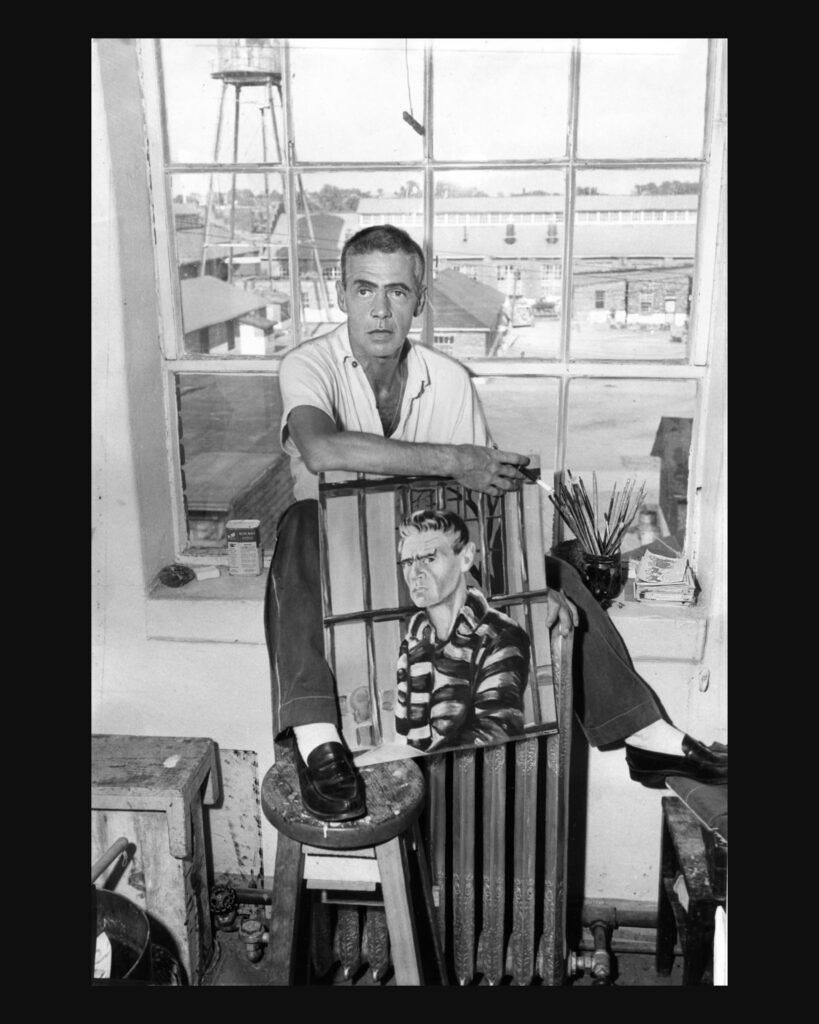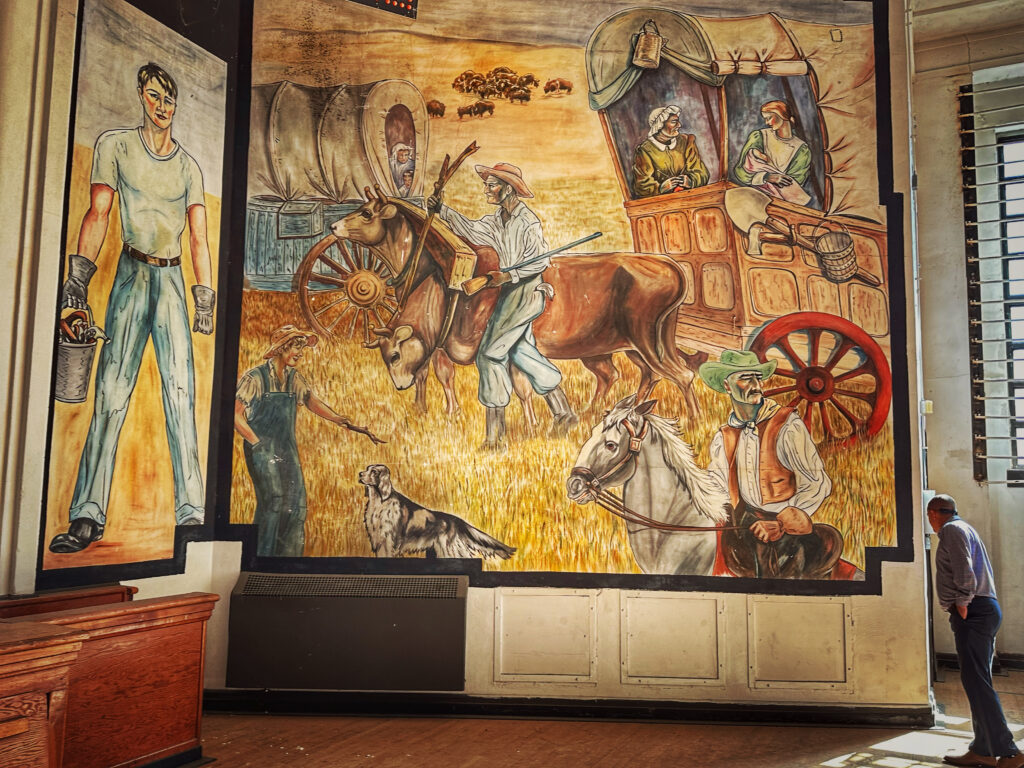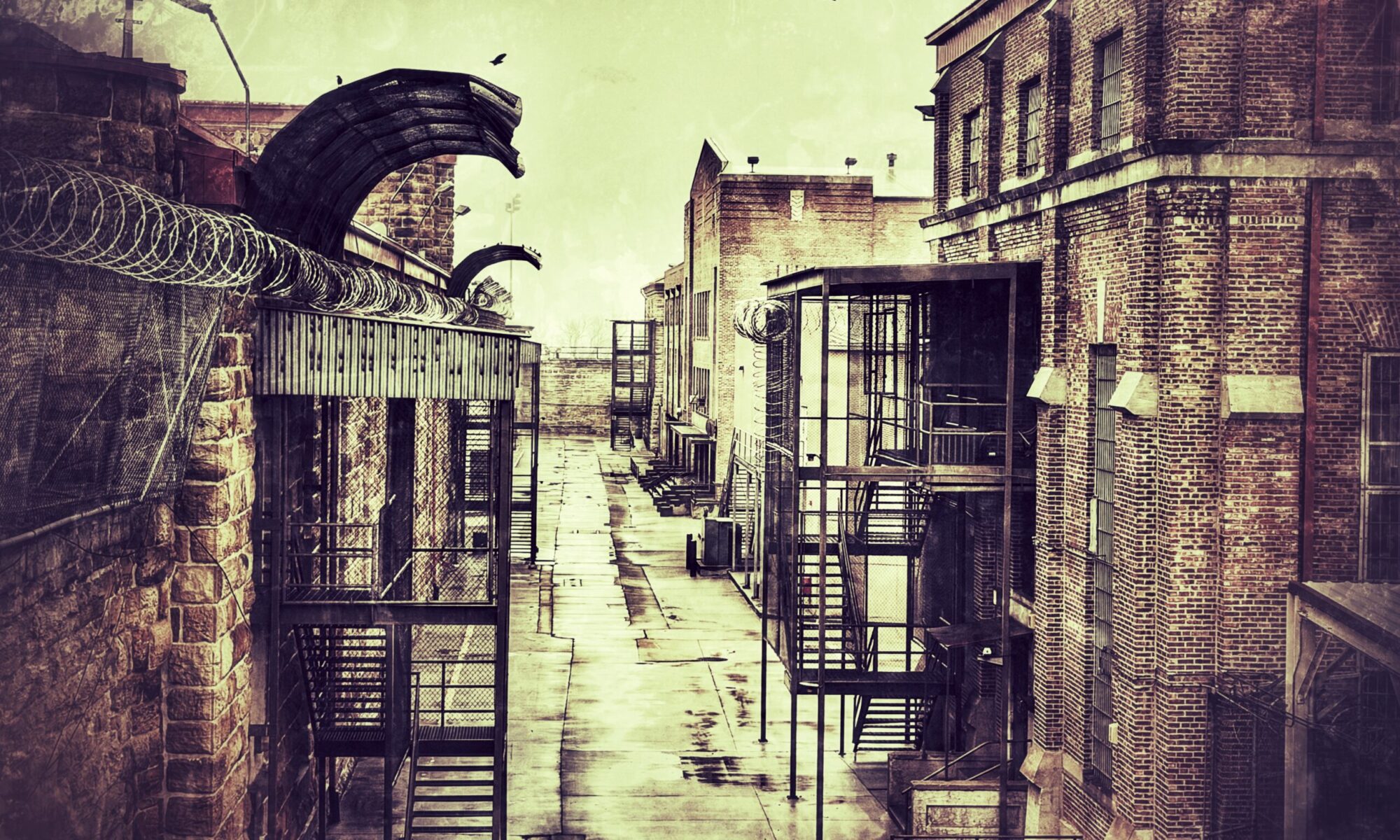
This photo of Ernest Aspinwall, taken in 1959 by a Kansas City Star photographer, captures a moment of recognition for Ernie and his incredible artistic talent. At the time, the Star was featuring a story about his life, his artwork, and the frescoes he painted in the auditorium of the Service Center building. In the background of the photo, the older penitentiary buildings are visible, including the building that housed Death Row. This historic view contrasts with the present use of the same space, which is now the site of the baseball field and recreation area.

Aspinwall’s sentences were commuted by the governor in 1959, and by 1969, Aspinwall was creating art as a street artist in San Francisco. Today many of his works are considered highly collectible.
This photo serves as a powerful reminder of Aspinwall’s story and the evolution of the penitentiary itself – preserving the past while acknowledging its transformation over time.
The Service Center Building, constructed in 1923, is an extraordinary part of the Kansas State Penitentiary’s legacy, showcasing stunning Art Deco design on both its exterior and the interior of its auditorium/gymnasium. This three-story brick building holds a deep historical and cultural significance.
One of its most notable features is the series of four frescoes painted by former inmate Ernest Aspinwall. Aspinwall, serving two life sentences as an habitual criminal, demonstrated remarkable artistic talent during his incarceration. The frescoes are remarkable depictions of early frontier life and the pioneers who settled in Kansas. Aspinwall was deeply dedicated to his craft, often spending months researching the subject matter of his art to ensure its authenticity and detail.
Aspinwall’s meticulous work reflects not only his artistic talent but also to his commitment to preserving history through art. These frescoes are more than just paintings on a wall, they are an irreplaceable record of Kansas’s frontier past, capturing the spirit of those who helped shape the state’s identity.

Aspinwall painted a series of 14 paintings depicting life inside the walls of Kansas State Penitentiary. They hang on the walls of the administration building at Lansing Correctional Facility today.
